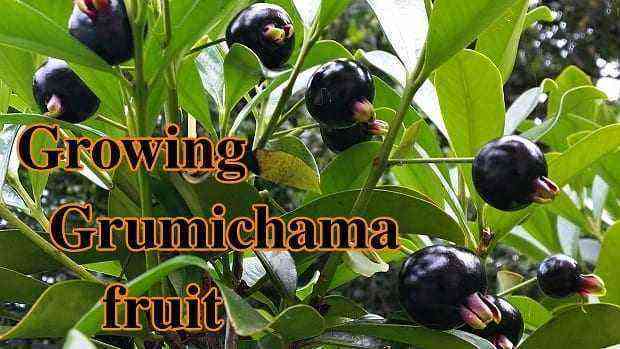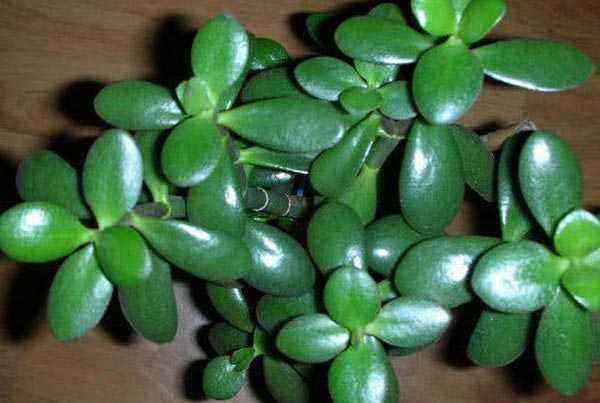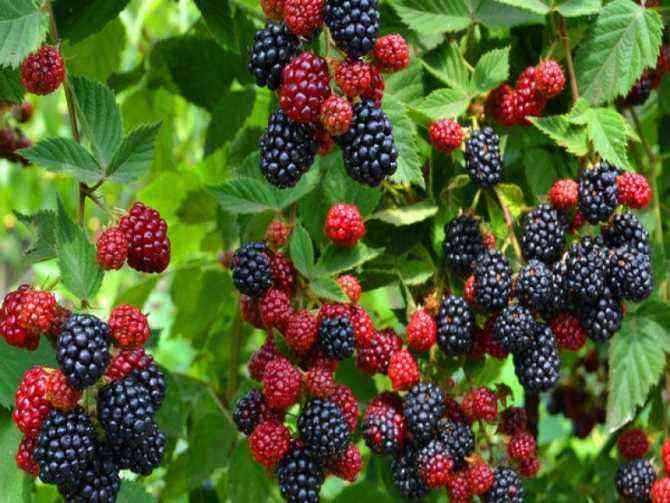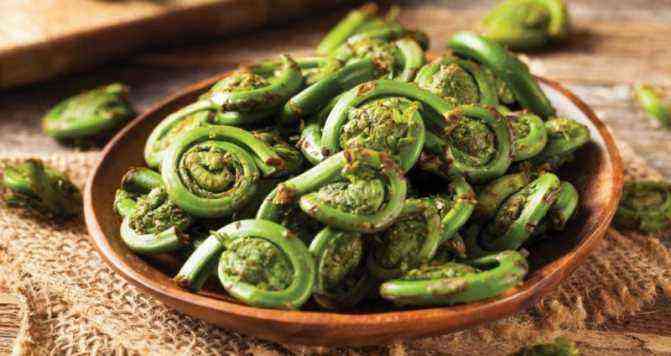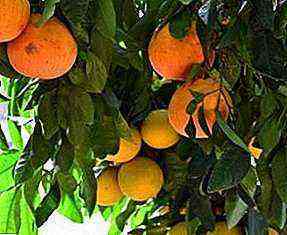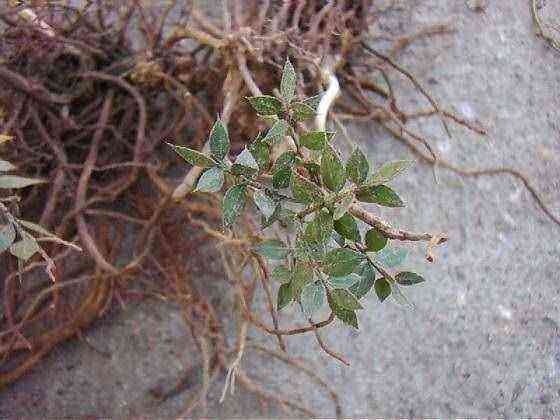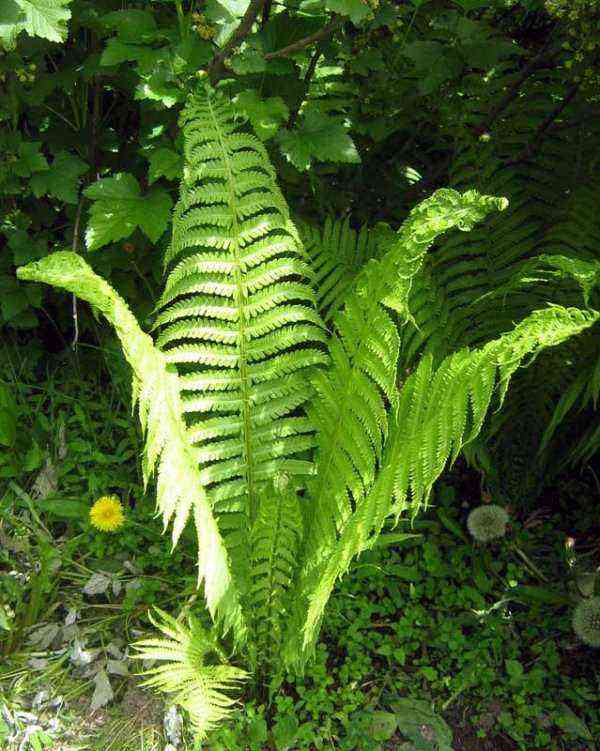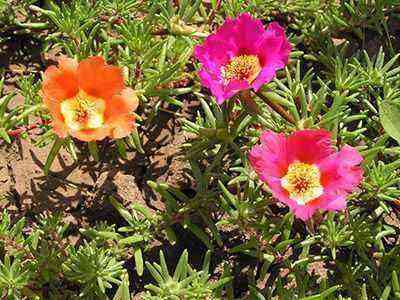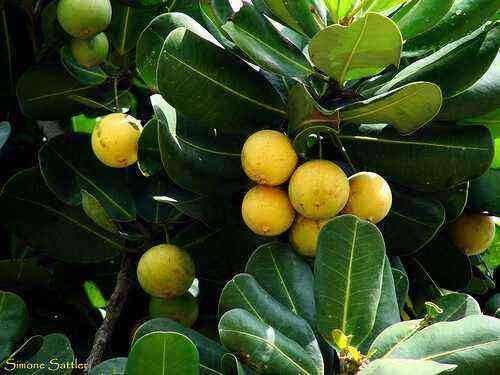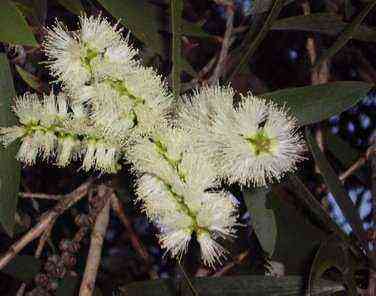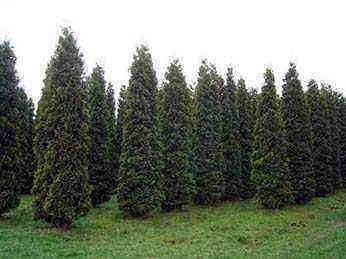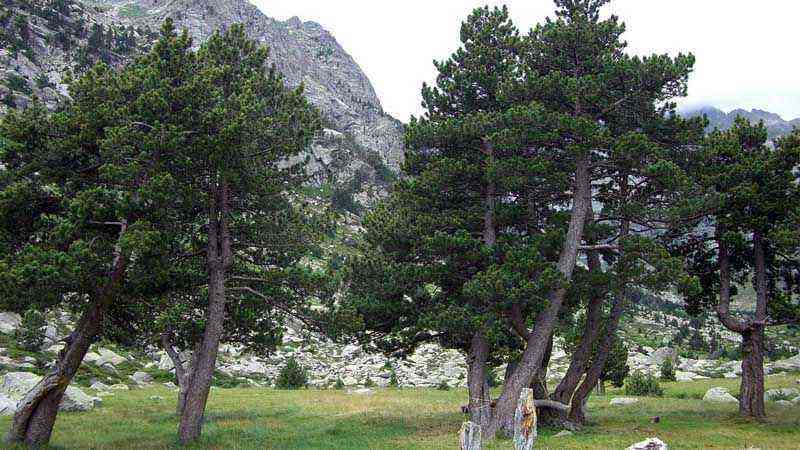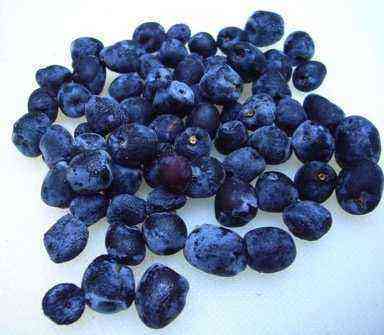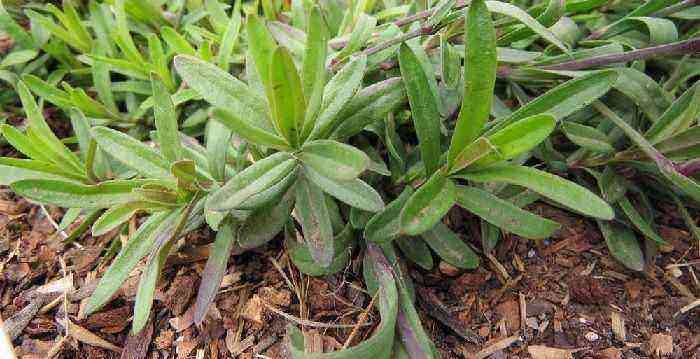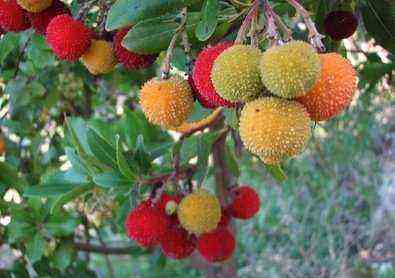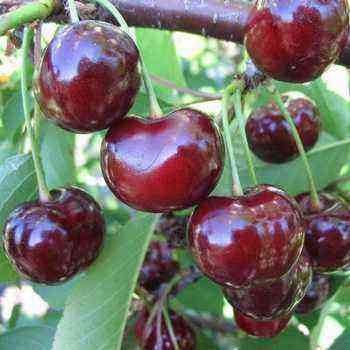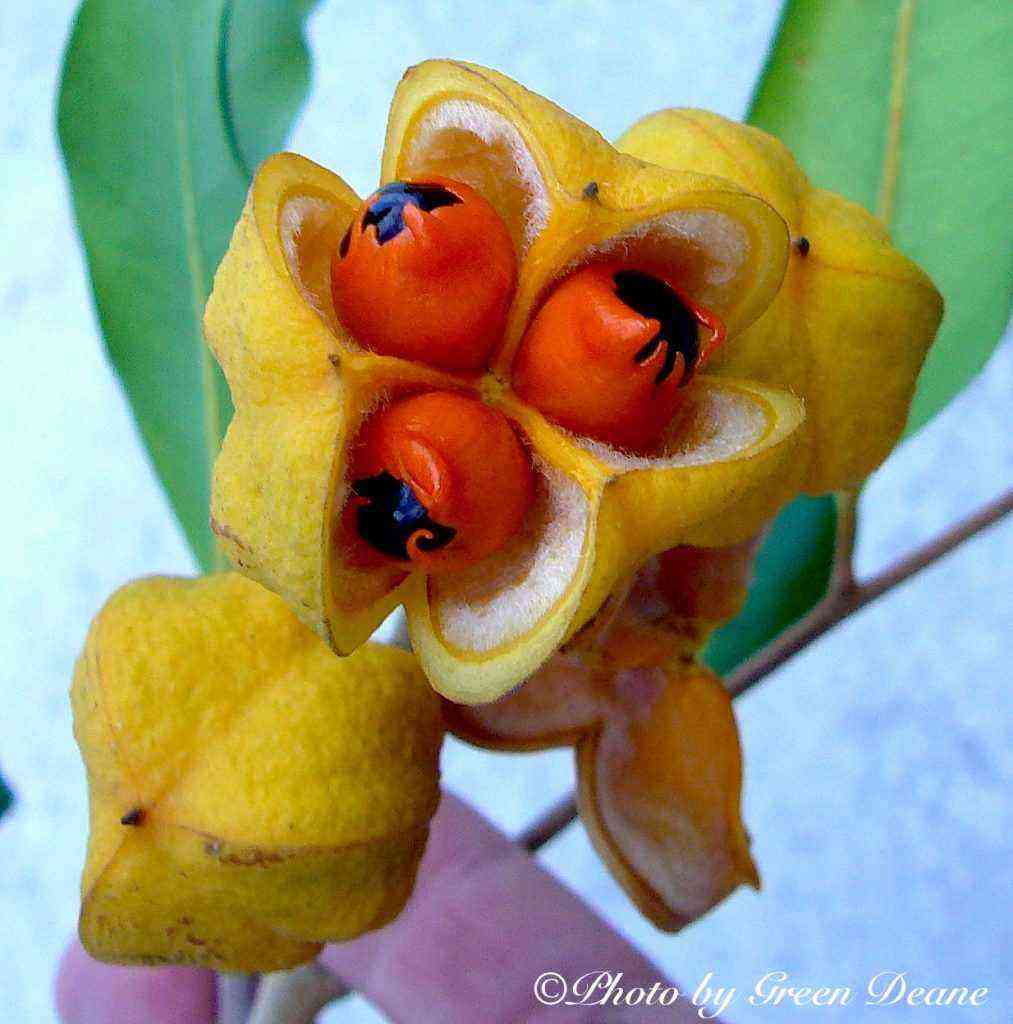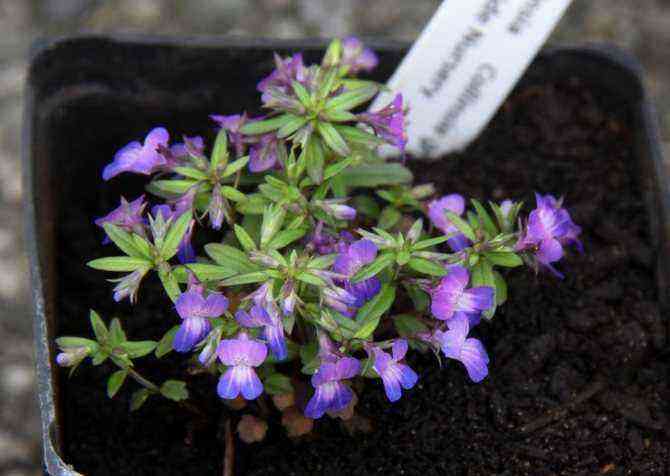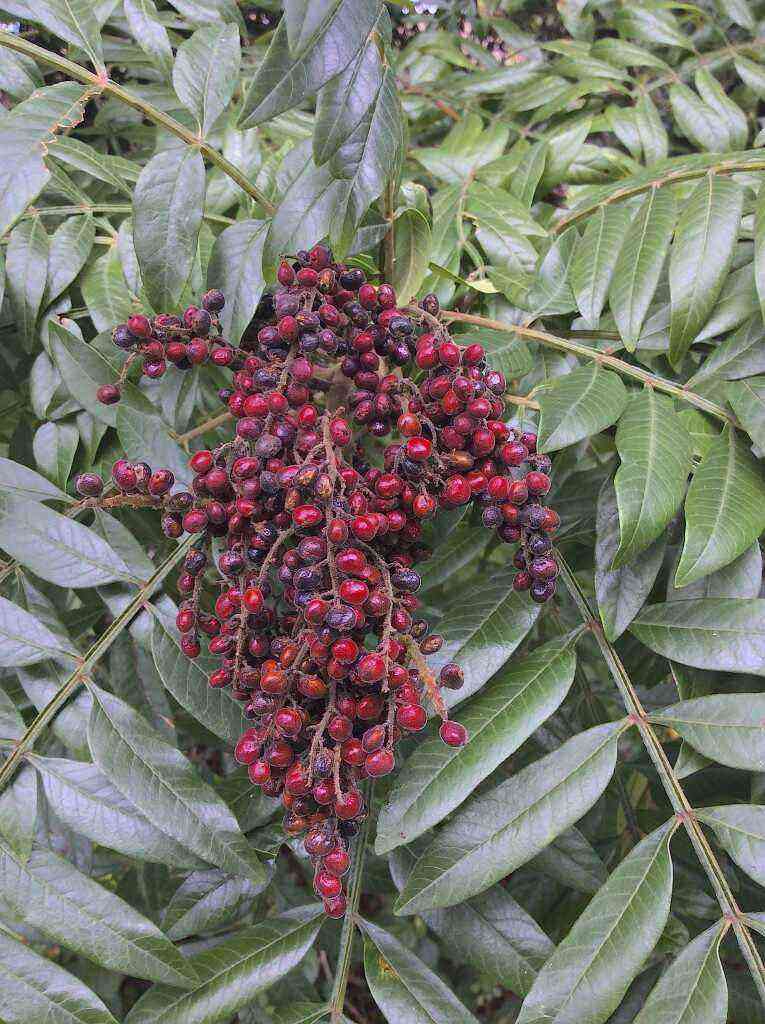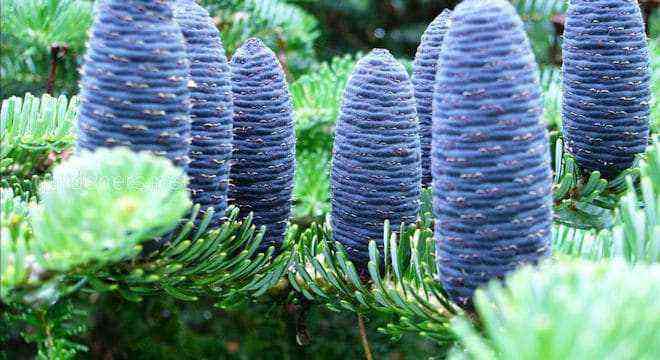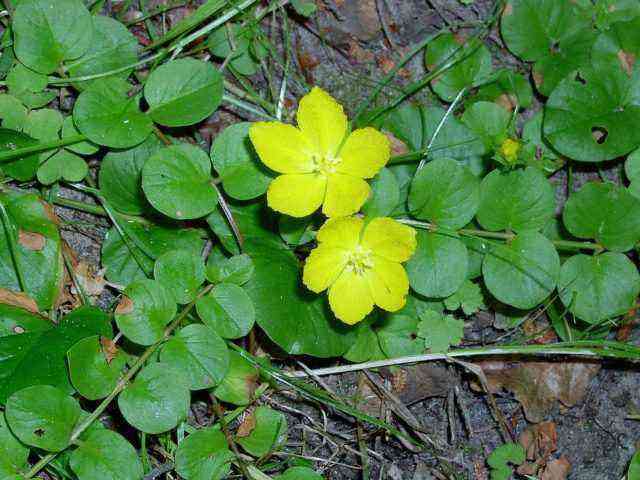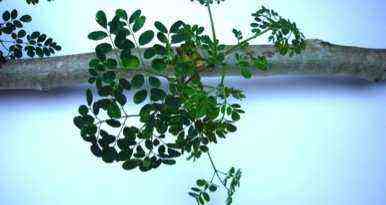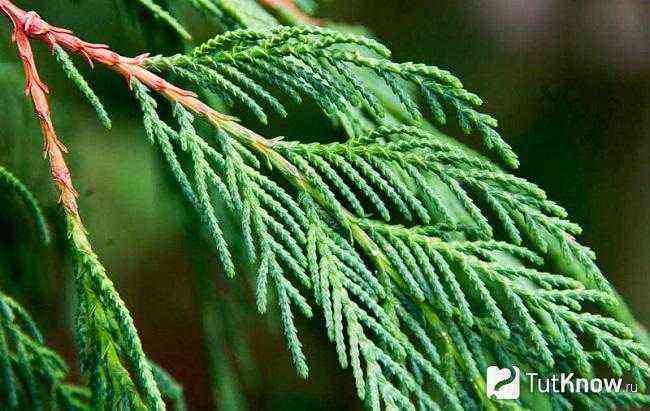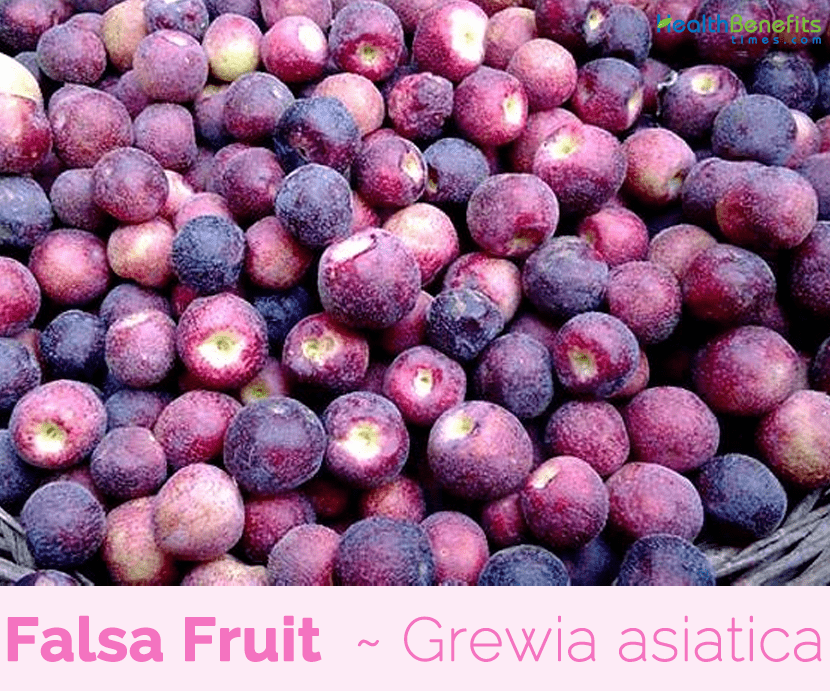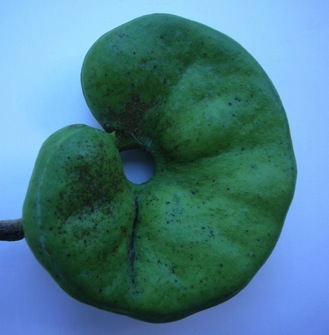
Pod of the non-edible E. contortislliquum
The flowers of the E. cyclocarpum (edible) are white and arranged like a spiked ball. The tree blooms February through April. The fruits take three months to ripen. The seeds are ripe when the seed pod (pericarp) turns from green to dark brown and by the noise the seeds make when the fruits are shaken. Each fruit 8 to 16 seeds. A tree can yield many pounds of seeds. The seeds are ovate and laterally flattened. They are red-brown, smooth, very hard, and marked on one surface by a line that follows the contour of the seed.
I have several reports that the very young pods, the immature, unripe seeds are edible when boiled. The white pith of the black pod, however, and the roasted ripe seeds peeled are edible. In fact, the seed flour is 35 percent protein. That’s three times the protein of wheat flour. The unripe pods are full of a sugary dry pulp. The ripe fruits are collected from May through July, from the ground or from the trees. A pole with metal hooks can be used to remove fruits from trees. The seed pods have to be opened to get the seeds out. Small impurities are removed with sieves. Seeds from the mature pods average 1,100 to 1,170 per two pounds. The mature black pods themselves are not edible but can be a source of saponins for soap making. The pods, by the way, are very sticky inside.
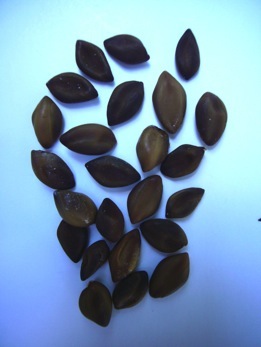
Seeds of the non-edible E. contortislliquum
The wood, similar to walnut, is water resistant and easy to work with hand tools. It is used for furniture, cabinets, veneer, construction, panels, posts, firewood and charcoal. Natives used its trunk to make the famous dug-out canoes you saw in grade-B movies. Enterolobium cyclocarpum, (en-ter-oh-LOW-bee-um syk-lo-KAHRP-űm) also provides tannin for preserving hides and is a source of a gum similar to gum arabic. Without attention at ambient temperatures the seeds can germinate up to a year later. With careful storage, at 5 C and 68 percent moisture, they will have an 80 percent germination rate after 11 years.
One of the more unusual aspects of the Ear Tree is that it evolved when there were large land mammals to spread its seeds. But, those were killed of by human hunters some ten to twelve thousand years ago. Smaller mammals did some spreading of the seeds after that until horses and cattle were introduced into the Americas. It is called Corotu, Orejoni and more commonly, Guanacaste, which means ear-tree in Spanish. That comes from the Nahuatl word/phrase cuauhnacaztli which means “area where the ear tree grows.” The Ear Tree is national tree of Costa Rica and El Salvador.
Enterolobium is Latin meaning “in lobes,” referring to the seeds in the pods. Cyclocarpum is two Greek words used to mean seed/fruit in a circle, referring to the shape of the pod. Contortisiliquum is said kon-tor-tih-SIL-ih-kwoo-um and means twisted pod.
One last point: The non-edible species might be edible with proper preparation that I am not aware of. I think one offending chemical is calcium oxalate which can sometimes be dealt with by dry heat. But like many members of the greater family it could also have alkaloids that permanently damage the liver so I think it is a species best left alone.
Green Deane’s “Itemized” Plant Profile
IDENTIFICATION: 100-foot tall tree with broad spreading crown to 70 feet wide; bark with shallow longitudinal grooves. A vigorous grower; looks feathery, fern like, leaves alternate, evenly bipinnate; leaflets oblong; flowers white, in powderpuff-like clusters; fruits reddish to dark brown with a yellow ring around. Easy to grow, may be grown indoors if kept pruned to size.
TIME OF YEAR: Time of year: fruits in spring, matures in summer (See photo below)
ENVIRONMENT: Likes warmth, bright light, moist soil. Native from Mexico through Central America, to Venezuela, Trinidad, Guiana, and Brazil where it is dispersed by horses, peccaries and now extinct large herbivore. Introduced as a shade tree in the West Indies, South and Central Florida, and other tropical/subtropical regions. It ranges at least as far north as Central Florida (Orange and Seminole Counties.)
METHOD OF PREPARATION: Reportedly the very young pods and Immature seeds from green pods are edible if boiled in plenty of water. I have not yet proven that. However the ripe seeds roasted and peeled are edible. Pith of the mature pods is sweet and sticky. It can be eaten raw or cooked. In Columbia they mix the pith with sugar and eat the paste as a dessert.
HERB BLURB
Bark extracts have been used for colds, bronchitis and to reduce fevers.


